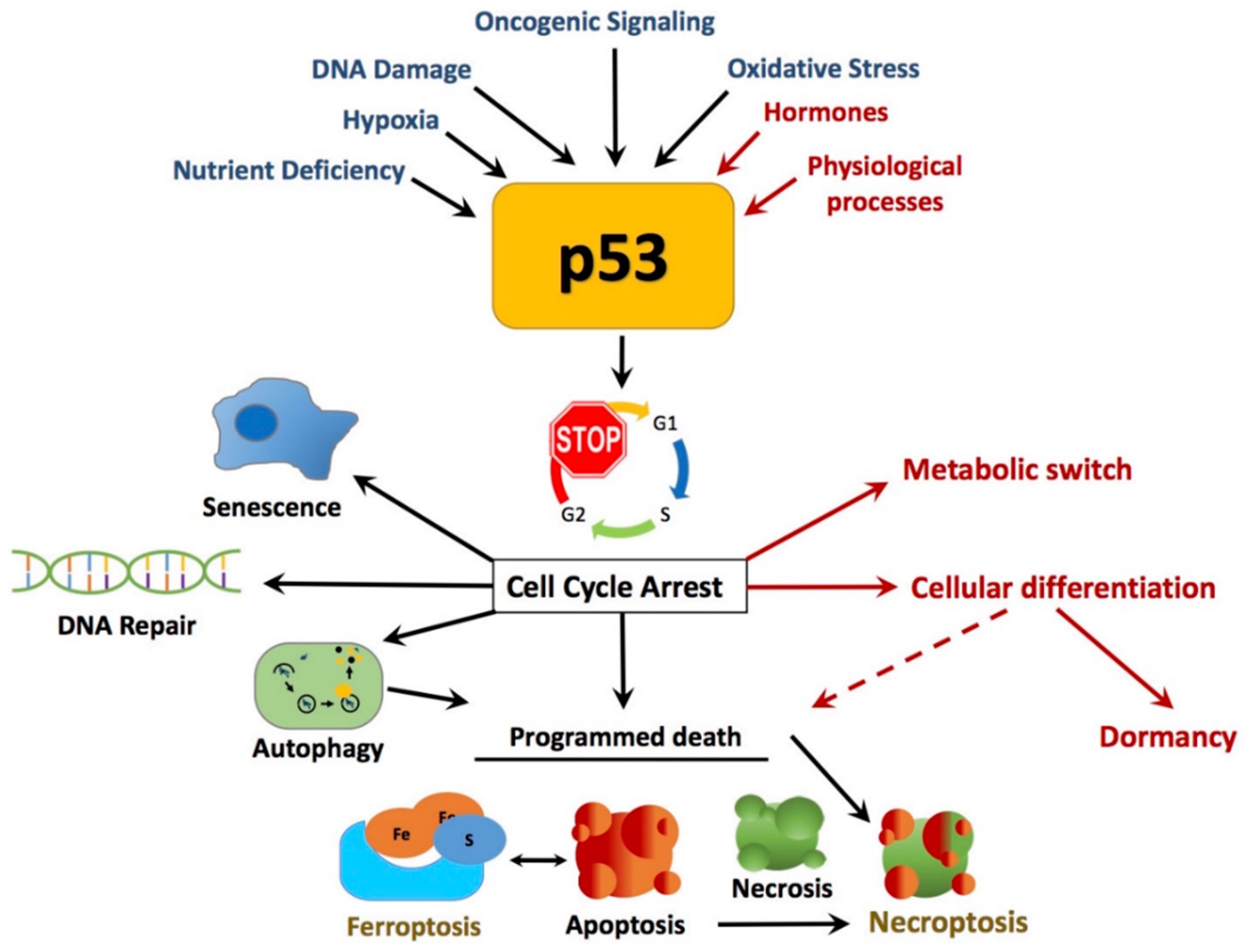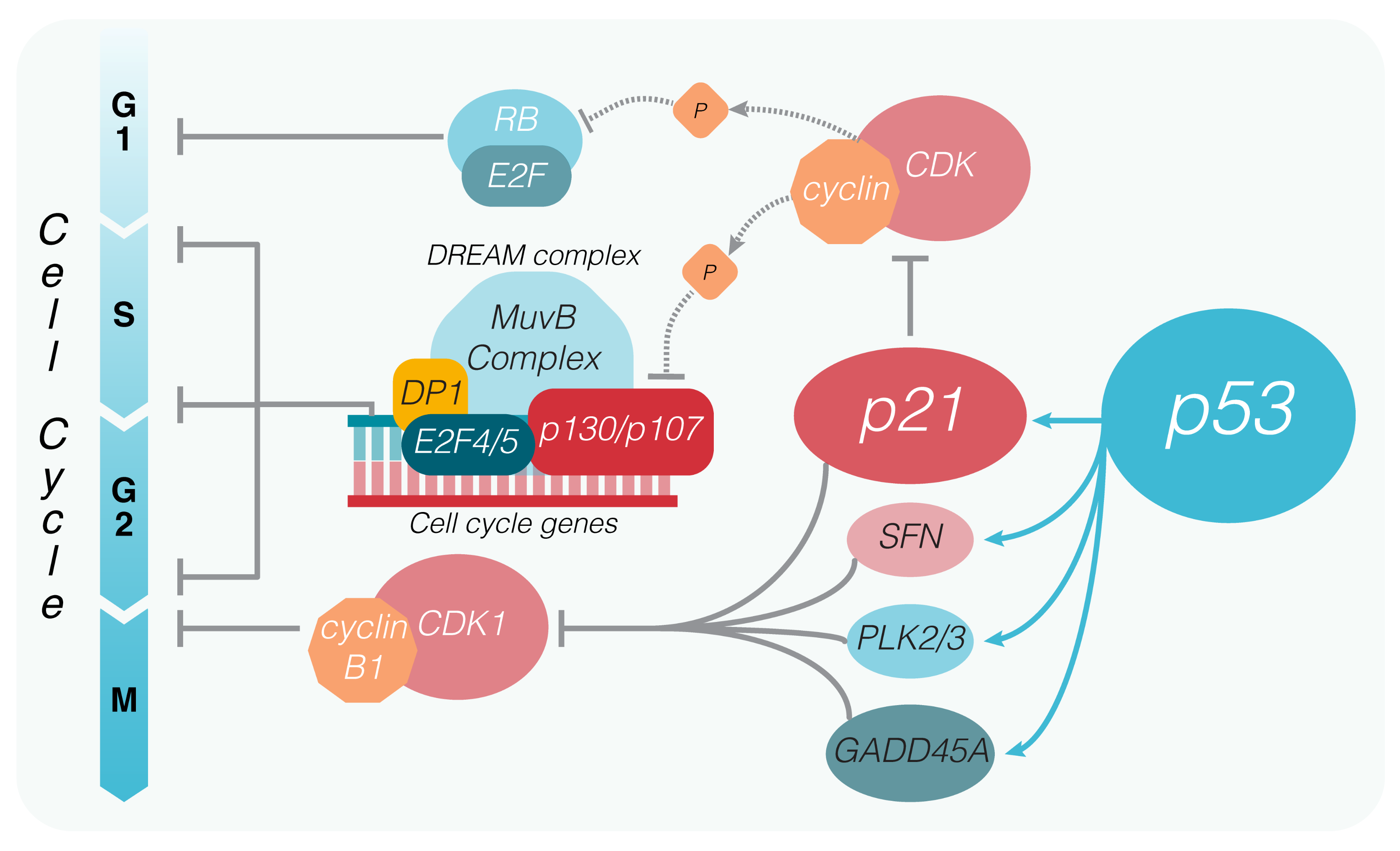The Roles of p53 in Mitochondrial Dynamics Biology Diagrams For example, p53 activation by nutlin-3a results in apoptosis in some cells but cell cycle arrest and senescence in others (both malignant and nontransformed). 67 Moreover, restoration of wild Bulk p53 acetylation increased following DNA damage, and acetylated p53 was enriched at the promoter of the cell cycle arrest gene CDKN1A 70, yet mutating five 70 or six 127 acetylation sites in

The tumor suppressor gene p53, implicated in diverse types of human tumors, functions both as a gene-specific transcription factor as well as a specific inhibitor of the transcription of certain genes: The two physiological outcomes of re-expression of wild type p53 in tumor cells, not expressing wild type p53, are G 1 arrest and apoptosis. The mechanism of G 1 arrest by p53 is much better

How does p53 induce apoptosis and how does this relate to p53 ... Biology Diagrams
Cell-cycle arrest and apoptosis are the most noticeable biological outcomes of p53 activation in cell culture and animal experiments. The seminal finding of p53 as an inhibitor of oncogene-mediated transformation in foci formation is likely the result of its cell-cycle arrest or apoptosis activities (Finlay et al. 1989).The mammalian p53 DNA-binding domain has marginal thermostability, which
Activated p53 promotes cell cycle arrest to allow DNA repair and/or apoptosis to prevent the propagation of cells with serious DNA damage through the transactivation of its target genes implicated in the induction of cell cycle arrest and/or apoptosis. Thus, the DNA-binding activity of p53 is tightly linked to its tumor suppressive function.
The Regulation of p53 Growth Suppression Biology Diagrams
Although several p53 target genes are activated upon cell cycle arrest induction, CDKN1A is the main induced gene in p53-mediated cell cycle arrest. The CDKN1A gene codes for the p21WAF1 protein, a cyclin-dependent kinase inhibitor 1 that can directly interact and inhibit CDK complexes resulting in cell cycle arrest [92, 93]. Through the
